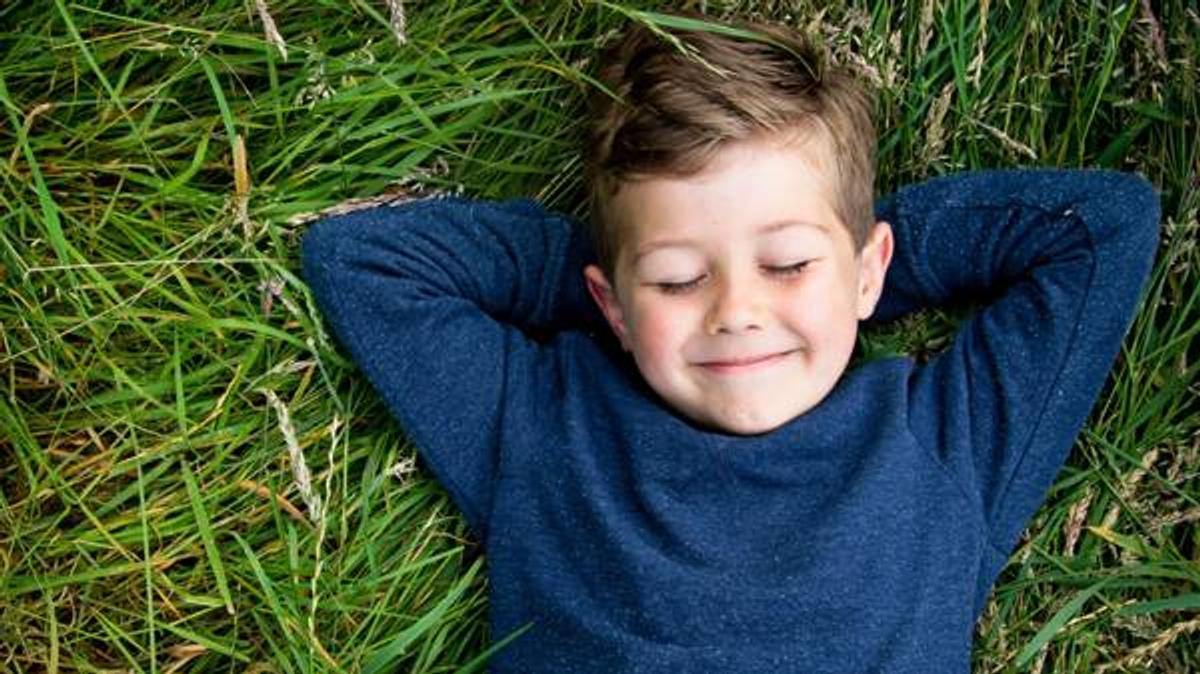Be Well and Prosper

10 activities to support kids with anxiety
1 | Worry or “Reminder” stones
This activity is one that children will ask you to do again and again, and it will actually provide them with some comfort in their time spent away from you or their loved ones. Buy oven bake clay at your local craft store and have the children choose up to three colours that make them feel calm or happy. As they roll the colours into a ball and then gently push their thumb print into it, talk to the child about what this stone symbolizes for them; perhaps include a reminder to breathe, a positive thought, or a favourite mantra such as, “I can get through this”. After it is baked for 30 mins at 250 degrees, it can be kept in their pocket and used in difficult moments as a reminder that they are safe and in control. Parents can even involve themselves in this activity and make a worry stone as a transitional object for kiddies who are having trouble separating. (Note: Most of the time, the stones are made in therapy, but baked at home).
2 | Calm down jars
Another fun activity that kids love to do is make “calm down jars”. Throw some warm water, glitter glue and glitter in a glass (or even better, plastic) jar and have your kiddies shake it up to watch the glitter slowly float to the bottom. It is incredibly soothing and relaxing to watch and kids can use it at home after a difficult or stressful moment. Encourage them to do some deep breathing as they watch as well as incorporate some mindfulness. Smaller versions of the calm down jars can be made by using small plastic baby oil bottles and can be kept in the car or in Mom’s purse for a quick relaxation tool on the go.
3 | Bibliotherapy
A great way to keep kids engaged while teaching them some important coping skills is to read age appropriate books on the topic with them. My favourite book to read with my anxious kiddos was written by yours truly and is called There’s a Bully in My Brain. Children love that the main character, Justin, worries about the same things they do, and they are actually provided with some concrete and realistic cognitive behavioural strategies to use when they are experiencing anxious moments. As an added bonus, there are printable sheets at the end of the book for therapists to use as a tool in continuing the conversation about the physical sensations we feel in our body when anxious, and the benefit of breathing as a coping tool. Kids can also fill in what the bully in their own brain tells them as well as what they can say back to stand up to it. (There’s a Bully in My Brain is available on Amazon and Barnes and Noble.)
4 | Positive mantra bracelet
Making positive mantra bracelets is a simple but fun way to get kids talking about positive thinking and, more specifically, which mantras best apply to them and their worries. Start by opening up a discussion about the things they worry about most and help them come up with three or four mantras they can repeat to themselves in an anxious moment, such as “I am safe”, “Mom will always come back,” or “My best is good enough”. Assign each mantra to a different colour bead, and have them string them onto a pipe cleaner or lanyard to be worn on their wrist as a daily reminder to think positive thoughts and breathe. The soft pipe cleaner and smooth, sliding beads also function as an awesome yet discreet fidget for our tactile seeking little ones.
5 | Worry box
Very often kids can feel as though they are controlled by their anxious thoughts and feel helpless in stopping them. Their parents will report that their child cannot stop talking about certain topics, and they often feel frustrated that they don’t have enough time in their day to address their child’s concerns. A great activity for kids struggling with Generalized Anxiety Disorder is creating a “worry box”. This activity can be as simple or as elaborate as you would like. Children decorate a box however they like--with hodge podge, glitter, markers, stickers, etc. As they are crafting their box, therapists can explain that the box will be a spot in which they keep their worries when they don’t have the time to think about them. They write their worry on a piece of paper and place it in a box to be addressed at a later time. It gives kids a sense of control over their anxiety, and parents can set aside a certain time of day to talk to kids about their fears. When they no longer feel as though they need to address a certain worry that is in the box, the piece of paper can be ripped up and thrown in the garbage, which is a therapeutic activity in itself.
6 | Butterflies in the belly
This butterfly in my belly activity is an adorable and non-threatening way to open up discussions with kids about their worries or fears. The therapist draws and cuts out butterflies of all different sizes in advance and traces the child’s head and torso on a large piece of oak tag. (For children with a history of physical and sexual abuse/trauma, it may be best to have an outline of a person traced out before the session starts). Talk to the child about the physical sensations they feel in their body when they feel worried, such as butterflies in their belly. Ask them to write down different things they stress about on the butterflies and use the various sizes for big or little worries. End with a discussion about what calm down strategies to use when the “butterflies in their belly” show up and write them down in a butterfly net to symbolize “catching the butterflies”.
7 | Create a journal
Many of the kids we work with have a hard time expressing themselves verbally or do not have a parent or loved one they trust to talk to about their feelings. It’s important to explain to these children that they do not have to talk about their worries or stress if these topics make them uncomfortable, but they do have to find a different outlet for expressing themselves. Have these children decorate a journal that is personal to them using stickers, markers, or even magazine cut-outs of positive phrases, and encourage them to journal when they first sit down with you as well as during times between sessions.
8 | Stress balls
Stress balls are a true fan favourite, and you’ll be hard pressed to find a child who does not enjoy this activity. Fill a balloon with flour, rice, orbeez, or play dough using a small funnel, tie the end, and make sure to double wrap it into another balloon for extra security (Mom and Dad will thank you!). Stress balls make for a great fidget for our nervous kids and serve as a great distraction when working with kids with Trichotillomania.
9 | Slime
Slime is all the rage lately and a quick google search will produce hundreds of recipe variations. The cool part about making slime is that kids find the process super fun, but it is also an awesome therapeutic tool for our sensory seeking kids. Add some lavender oil into the slime as an additional bonus to calm them as they play. Just a few minutes of running the slime through their fingers can bring a child’s baseline level of anxiety down a few notches.
10 | Put them all together and make a calm down “toolbox”
Our job as therapists is to provide children with the tools they need, and eventually, get them to a point where they can regulate their own emotions in challenging moments. A great way to support and empower our kids to self soothe is to help them make a calm down “toolbox” with many of the items that have been mentioned in this article. It is important to explain that what may help to calm us down one day may not work the next, and using an analogy like “you wouldn’t pick up a hammer to fix a leaky faucet” may help them to understand why we need many “tools” in our toolbox. Have a realistic conversation with them about what helps them calm down when they are feeling anxious, and place those items in the box. Aside from their worry stone, journal, calm down jar, positive mantra bracelet, stress ball, and slime, kids may include bubbles for breathing, a photo album filled with happy memories, a stuffed animal, gum, an iPod for music, or colouring books and crayons. You can also make a list or key ring of strategy ideas that may not “fit” into the box, such as taking a bath or going for a walk.
Summary
Whatever activities you choose for your sessions, remember that the single most important part about your job is to create a safe and loving therapeutic space built on trust and free of judgement. Providing this environment for children can be life changing for them, and although they may not remember making a stress ball, they will always remember how you made them feel! Have fun!

